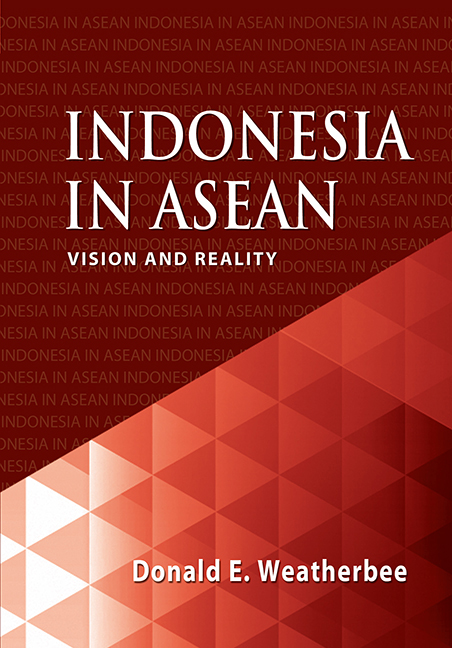Book contents
- Frontmatter
- Contents
- Editorial Note
- Acknowledgements
- About the Author
- Introduction
- I The Visible Indonesia
- II Indonesian Policy Foundations
- III Democracy in Indonesian Foreign Policy
- IV Islam in Indonesian Foreign Policy
- V Indonesia, ASEAN and Regional Political Stability and Security
- Conclusion
- Addendum
- End Notes
- References
- Frontmatter
- Contents
- Editorial Note
- Acknowledgements
- About the Author
- Introduction
- I The Visible Indonesia
- II Indonesian Policy Foundations
- III Democracy in Indonesian Foreign Policy
- IV Islam in Indonesian Foreign Policy
- V Indonesia, ASEAN and Regional Political Stability and Security
- Conclusion
- Addendum
- End Notes
- References
Summary
On 31 December 2015, the Association of Southeast Asian Nations (ASEAN) will celebrate the establishment of the ASEAN Community (AC), designed to be a “dynamic, cohesive, resilient and integrated” institutional expression of “soft regionalism”. It is “soft” in the sense that the members did not give up any of their independent sovereign rights through multilateral cooperation. There is no central authority with plenipotentiary powers. There are no mechanisms through which members can be held accountable for violation of norms or rules. Over the years the regionalist vision, inaugurated in 1967 by the original core of five members — Indonesia, Malaysia, the Philippines, Singapore, and Thailand — has become even “softer” with the inclusion of the CLMV states — Cambodia, Laos, Myanmar, and Vietnam. The AC project comes onto the scene as ASEAN is characterized by intramural political divergence and diminishing international political relevance. The fact that ASEAN has survived its discords and travails over half a century to reach the point of an AC is in no small measure due to the commitment of Indonesia.
The vision of an ASEAN Community was given policy content at the 2003 9th ASEAN Summit chaired by Indonesia. Its “Declaration of ASEAN (Bali) Concord II” set forth the objective of the creation of an ASEAN Community by the year 2020. The AC rests on three “entwined and mutually supportive” pillars: the ASEAN Economic Community (AEC); the ASEAN Security Community, renamed the ASEAN Political and Security Community (APSC); and the ASEAN Socio-Cultural Community (ASCC). At the 2007 12th ASEAN Summit in Cebu, the Philippines, the timetable was accelerated, setting 2015 as a new date for completion. A reading of the summit's “Cebu Declaration on the Acceleration of an ASEAN Community by 2015” confirms that the shortening of the calendar had more to do with the dynamics of change in the international environment than progress in community building. Historically, ASEAN has always seemed to be one or more steps behind the regional events affecting it.
As an international actor, the ASEAN Community will be little different than the historical ASEAN. The modus operandi is unchanged. The economic, political, and social integration inherent in the AC's stated goals faces the insurmountable obstacle of the ASEAN principles of sovereignty, non-interference in domestic affairs, and a consensus decision-making mode in which the weakest or the most reluctant member holds a trump card.
- Type
- Chapter
- Information
- Indonesia in ASEANVision and Reality, pp. ix - xivPublisher: ISEAS–Yusof Ishak InstitutePrint publication year: 2013

